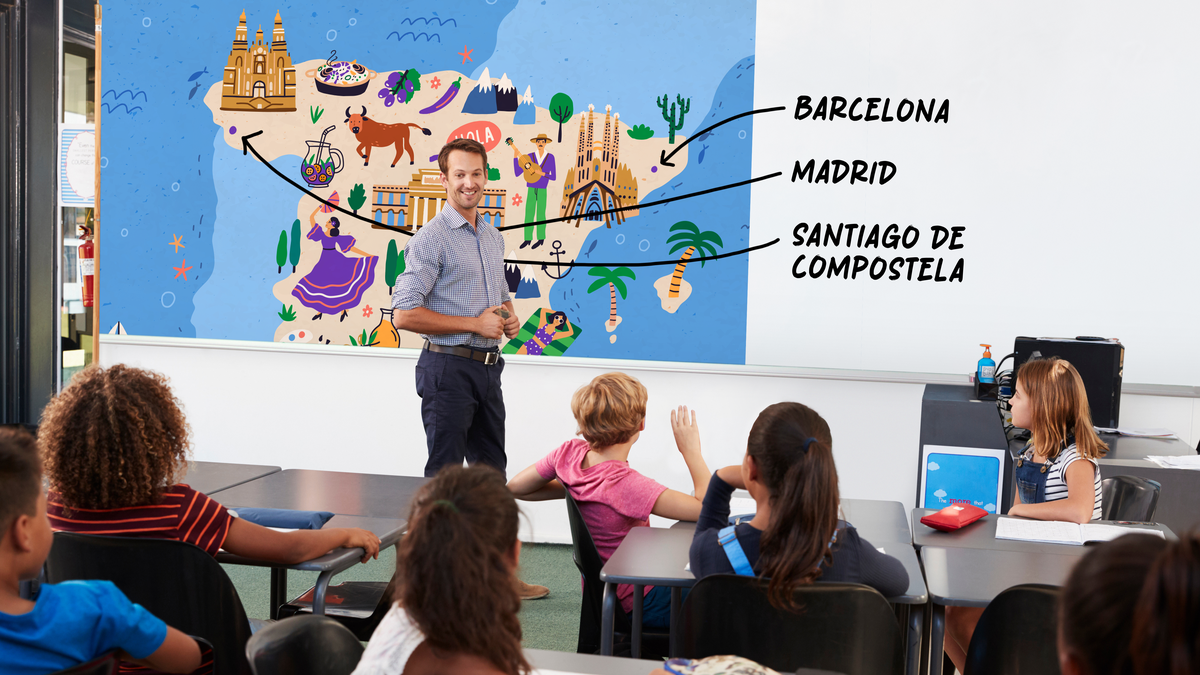Small-scale and sometimes subtle instruction approaches can contribute to consistent learning growth, a recently-released study by NWEA, a division of HMH that provides educational assessments and research, said.
Those approaches include the encouragement of self-directed learning and flexibility in grouped learning, the study said.
Teachers using these and other practices also balance students’ individual learning needs while providing grade-level content and high expectations. Flexible instructional strategies allow them to make in-the-moment pivots to meet those needs.
However, this can be difficult when a classroom has 30 diverse learners, said Chase Nordengren, author of the study and principal research lead for effective instructional strategies at NWEA.
“From my perspective, the core of improving learning is really about improving the quality of that [student-teacher] interaction, changing that interaction in ways that produce more learning for students, that engage them more, that make them feel more empowered and comfortable,” Nordengren said.
And often, these changes are part of the many small decisions teachers make from day to day and week to week that ultimately result in what a student experiences in the classroom over the course of a school year, he said.
The newly released study is a follow-up to 2018 research that found schools that showed high levels of growth were not always those showing high levels of achievement and that high-growth schools can exist in communities with various income levels and demographics.
Student achievement is measured by the percentage of students who meet or exceed a certain standard. Student academic growth, on the other hand, is measured by documenting how much learning changes over time regardless of whether students begin at, above or below grade level.

For the new study, Nordengren wanted to look at what specific approaches contribute to high-growth learning. The research focuses on four teachers from two high-growth schools – an elementary and a middle school — in Illinois’ Schiller Park School District 81. The teachers, who each led classrooms in 1st grade, 3rd grade, 6th grade math and 7th grade humanities, were chosen because their classrooms showed higher-than-typical student growth for six school years in a row.
Schiller Park Superintendent Kimberly Boryszewski said the pre-K-8 grade district wanted to participate in the research because it believes in shared learning and the exchange of best practices, particularly now as schools help students recover from pandemic learning losses.
To help close student achievement gaps that widened during the pandemic, the district offered after-school tutoring. It will also have instructional coaches in elementary schools next year, Boryszewski said.
“It really boils down to what’s going on in the classroom and how well we’re differentiating and meeting kids where they are,” Boryszewski said. “We need to capitalize on that time when they’re with us, that 6 1/2 hours. We’ve got to make sure that we’re giving them what they need in that time to be effective.”
The study said 55% of students in the district are non-White, 62% of students receive free or reduced-price lunches, and 25% of students are English learners.
By studying these classrooms in-depth and sharing 10 “best bet” practices commonly used by these teachers, Nordengren hopes to highlight techniques that can be replicated in other districts.
“The intent of the paper is not to say you must or should adopt all 10 of these to go out and make your school exceptional,” Nordengren said. Rather, the study gives examples of practices that can help teachers make the best use of their limited time with students, he said.
Here are the approaches and practices the study says contribute to high learning growth:
-
Provide time for retrieval practice. Students learn best if they have several opportunities to practice new knowledge. For example, in math, once students initially learn to “carry the 10” in two-column addition, they can practice using addition problems with various strategies so they retain that skill better than students who practice once or practice on problems that only require one strategy. This retrieval practice can benefit all types of learners across subject areas.
-
Mixed student learning. Using a mix of whole, small and individual student learning can help teachers collect formative information on where students are, create opportunities for more small group attention, and use technology to provide opportunities to practice retrieving information needed to build upon learning.
-
Adjust student groups. Flexibility to move students between learning groups can also be effective, said the study, which described how the 1st grade teacher keeps groupings fluid and low-stakes so they don’t cause student anxiety. Mixed-ability groups can change as lessons change and as students and teachers realize more or less supports are needed.
-
Share students and strategies within the grade. Supporting student groups across a grade allows teachers to co-teach and regroup students when needed. This can help maximize educators’ ability to provide individualized supports.
-
Differentiate tasks. In an effort to differentiate, teachers create tasks that challenge students at each ability level. In the 3rd grade classroom, all students will read the same text, but one group will respond by writing full sentences while another responds with phrases. The groups then mingle at the end of the lesson for peer learning. This strategy aims to keep lessons engaging and rigorous for every student.
-
Practice foundational skills. Rather than remediation, teachers in the high-growth classes use formative assessments to identify specific skills students are missing and where they need more practice. The 6th grade teacher, for example, conducts a mini lesson when students continually make the same mistake in math. This helps students avoid repeating the same mistakes.
-
Teach multiple standards simultaneously. High-growth teachers plan how they will ensure equal instructional coverage across essential standards over the school year rather than running out of time at the end of the year. This approach can include giving math students multiple opportunities to discuss different skills rather than only sticking to a strict chronological schedule for math instruction.
-
Provide opportunities for self-directed learning. Giving students opportunities to move through activities at their own pace can help engage them. The 6th grade teacher, for example, provides students a list of tasks for each unit, including activities for online learning platforms, reflection questions, and standard worksheets or whiteboard problems.
-
Use student conversation as formative assessments. When students get opportunities to discuss assignments with each other in class, they can better understand where they need more support, demonstrate their learning, and build on each other’s knowledge. By observing these conversations, teachers can learn more about a student’s thinking.
-
Teach academic vocabulary. Giving students all the tools — including subject-specific vocabulary — can be critical in helping students fully understand a new lesson and access grade-level content. For example, the 7th grade humanities teacher doesn’t just teach about the meaning of words but will help students analyze words, such as “nuclear family,” and will guide students to look for evidence and examples from texts they’re reading. In younger grades, this could mean a teacher explains who an author is and what a book title is, Nordengren said.
This article was written by Kara Arundel from K-12 Dive and was legally licensed through the Industry Dive Content Marketplace. Please direct all licensing questions to legal@industrydive.com.
![]()



